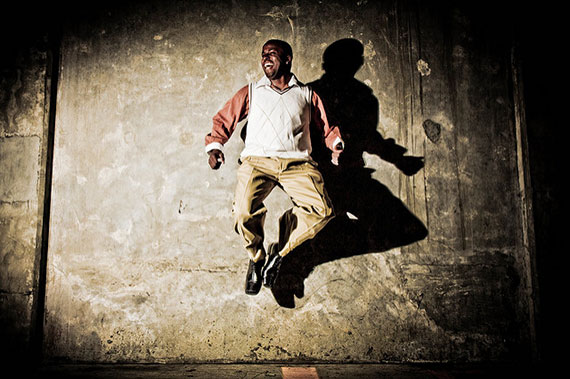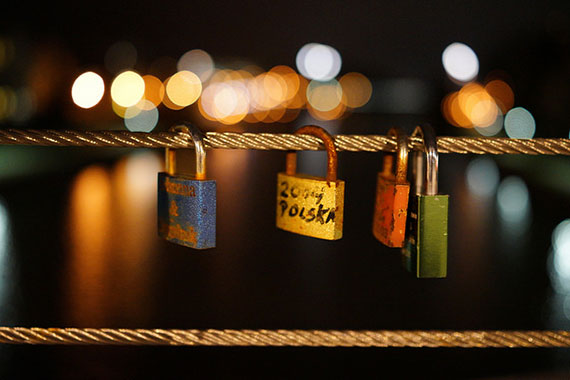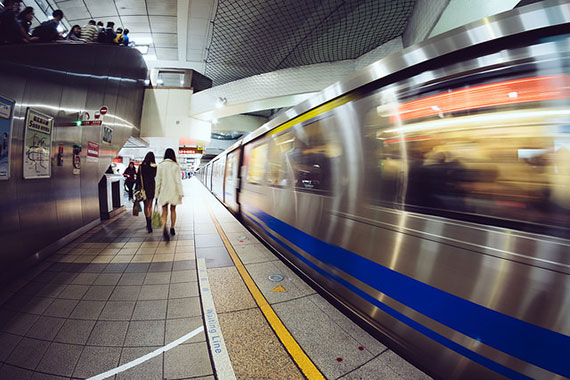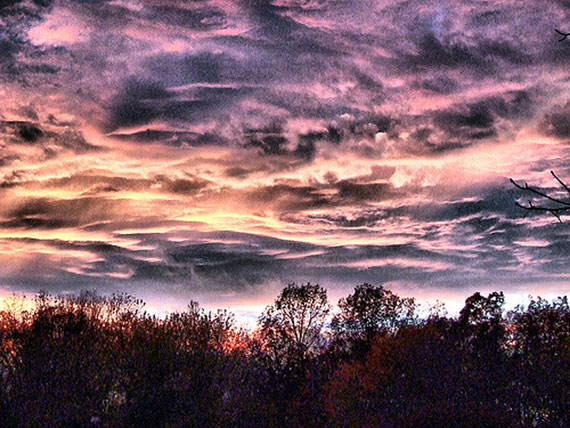Reciprocity is the law of the relationship between shutter and aperture. It stipulates that one stop increase in aperture is equivalent to the shutter duration doubling. Both increase light by one stop.

Photo by Amancay Maahs; ISO 200, f/13.0, 1/200-second exposure.
Thus, once you have the correct level of light for a perfect exposure, you can choose to increase aperture by one stop and trade this off with a doubling of the shutter speed (halving of the shutter duration). Twice as much light coming in for half the time equals the same amount of light.
This allows the photographer to retain the same exposure but change either aperture or shutter speed for artistic or practical reasons.
In addition, the photographer may wish to over expose or under expose. Understanding the law of reciprocity allows them to do this in a controlled and intuitive manner, understanding the exposure differences on the image plus the different changes to the depth of field or any motion blur increase or decrease.
Sometimes, however, the aperture you want and the shutter speed required do not give an adequate exposure with the available light (either natural or including flash). Fortunately there is another variable that affects exposure with the same degree of effect and works in the same measurements of stops of light. This is ISO and refers merely to the camera sensor’s sensitivity to light.
You therefore have three variables at your disposal. Each, however, alters the image beyond just the brightness of the final image.
The Law of Reciprocity
In summary, image brightness is determined by the amount of light that makes contact with the light sensitive sensor and the sensitivity of that sensor.
This is controlled by the duration of the exposure (the shutter speed), the intensity of the light (aperture), and the sensitivity of the sensor or film (ISO).

Photo by Matthias Ripp; ISO 6400, f/2.0, 1/30-second exposure.
When setting these elements, you take into account the law of reciprocity, which states an inverse relationship between the intensity and duration of light the camera is exposed to in order to shoot at the correct exposure. ISO merely acts as an additional method of control.
Exposure = Intensity * Time
So, equivalent exposures can be gained by decreasing one variant and increasing the other proportionally. So if duration is halved, intensity must be doubled.
Aperture = How Fast Light Gets In
Aperture is the diameter of the lens opening controlled by an iris. The larger the iris, the more light gets in over a given period of time.
Aperture is discussed in f-stops (e.g. f/4 or f/2.8 — the length of the focal lens divided by the diameter) but like all things photographic, this refers to stops of light. The smaller the f number, the larger the aperture.
Apertures can be remembered with a simple concept—the numbers 1 and 1.4 doubling alternately. So 1, 1.4, 2, 2.8, 4, 5.6, 8, 11, 16, 22, 32 with each one being an increase by 1 stop. Therefore f/1.4 is one stop higher than f/1, f/8 is three stops higher than f/2.8.

Photo by Mimi; ISO 200, f/11.0, 1/400-second exposure.
Larger apertures are preferable in low light to allow more of the light in. Every lens has a maximum aperture or aperture range (for some telephotos where the aperture closes when zoomed in).
The larger your aperture, however, the shallower your depth of field.
Shutter Speed = How Long the Lens Lets in Light
A camera’s shutter normally remains closed. When the button is pressed the shutter opens for a given period of time (either set by you or the camera’s auto settings). Shutter speed refers to how long the shutter stays open.
A shutter speed of, say, 1/100 of a second is open for twice as long as 1/200 second, letting in light for twice as long.
Rather conveniently. shutter speeds are discussed in seconds and fractions of seconds and can also be compared in stops of light with doubling of duration, meaning an increase of 1 stop.

Photo by Photos By 夏天; ISO 1250, f/1.0, 1/8-second exposure.
1/100 second is 1 stop of light brighter than 1/200 second. Three seconds is 1 stop less than 5 seconds.
Therefore, along with the aperture setting, shutter speed is controlling the light reaching the sensor or film. How sensitive that sensor or film is, of course, is a different matter.
ISO = Sensitivity of the Camera’s Sensor or Film
ISO (International Standards Organization) is an older concept from the days of film. It refers to sensitivity to light and, brilliantly, it works on the basis of, again, stops of light.
The higher the ISO, the more sensitive to light and the brighter the final image. ISO can therefore be used to affect shutter and aperture combinations.
If you find the shutter is too slow for the fast action you’re shooting and you cannot achieve a wider aperture to allow light in faster to counteract the problem, you can then select a higher ISO, making the camera more sensitive—meaning you can speed up the shutter speed.
Standard ISO is measured as 100, 200, 400, 800…. and these doubling numbers represent 1 stop of light each time it doubles. 100 ISO is 1 stop of light darker than 200 ISO, etc.

Photo by Jeffrey Hood; ISO 400, f/3.3, 1/80-second exposure.
In summary, once you understand the relationship between shutter speed and aperture, and then how you can utilize ISO to further hone your settings, you are safe to use a DSLR in its manual mode and not have to rely on the manufacturer’s program modes for lazy photographers. These program modes make assumptions which might not be what you’re looking for.
About the Author
Keith Trigwell is a live music photographer with a passionate interest in most other types of photography, particularly portraiture and fine art. His live music shots can be seen at https://www.flickr.com/photos/bigmojo. To pass the time, he also writes a few articles on photography and technical photographic matters.
Like This Article?
Don't Miss The Next One!
Join over 100,000 photographers of all experience levels who receive our free photography tips and articles to stay current:





This blog has a lot of useful information. All of the suggestions are quite beneficial.
TimR – While ASA was an older standard used for film, ISO was also used for film and replaced ASA. It was developed before digital capture, so the author is correct.
Hi,
Brings back memories 1972, from my training in the Royal Australian Air force( RAAF). 1000 hours face to face. We learnt on 5×4 inch Linhofs and covered all these points you raise. Develop to a given gamma etc., stepwedges & plotting with a densitometer. Digital makes you lazy. But its still there in the background of your mind. Like fill-in flash. You never went out to shoot without a flash on the camera. Shutter controls the sun and apature controls the flash. Set the the shutter to the film speed and away you go, and don’t forget the dark slide. But I’m showing my age. I only wish my zoom lens had a distance scale on the lens barrel.
Cheers
Norm
Very nicely written. Thanks for sharing.
ISO is the current modern term for determining digital speed.. the film speed back in the old days was called ASA (American Standards Association) so therefore you are incorrect when you said ISO is an older concept from the days of film.. perhaps you had a blonde moment there and made an error in your article perhaps?
Hi TimR,
I remember film sensitivity specified in ASA, DIN and without a doubt also ISO.
ASA and DIN where combined into ISO in the 70s. When you say “ISO is a current modern term for determining digital speed” you are referring to ISO 12232, but long before that we used ISO 5800 to determine speed/sensitivity.
I think the author uses the term ISO correctly when talking about sensitivity for both film and digital sensors.
Reading the article, there’ s no mention of’ ‘Reciprocity Failure ‘, and the method of counteracting, by increasing the exposure time even more than, the balance of time and aperture. This happens in B&W and not just colour film, where one will also get a cross-over of colour bias. My RPS Distinction B&W Prints consisted of exposure times of 20 to 30 minutes duration, and the reasons for this are given in my talks. But that is the out of fashion film and wet print…Real Photography.